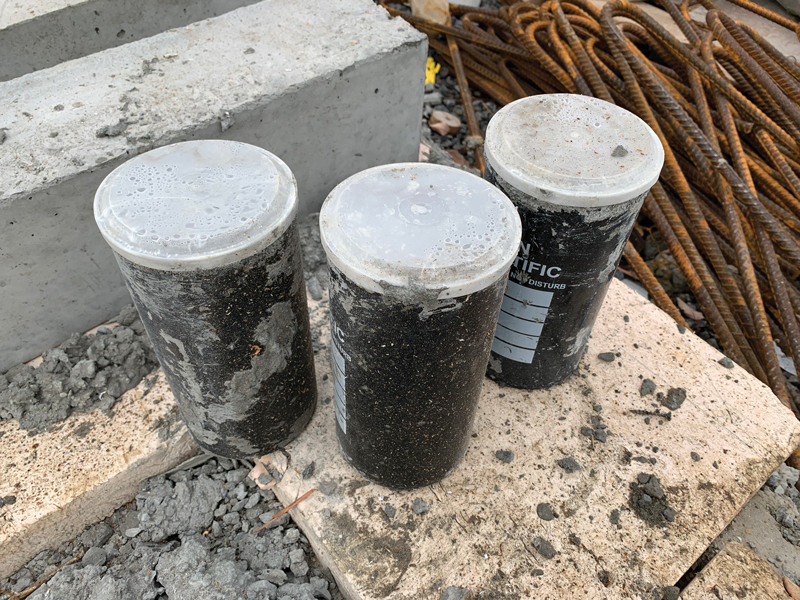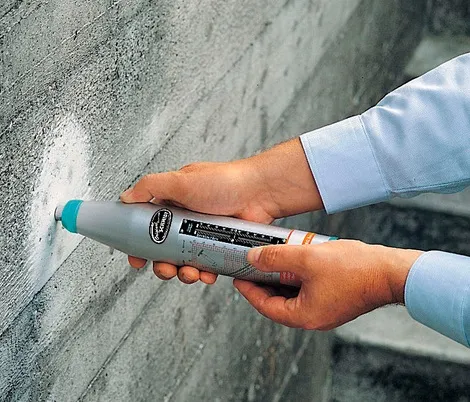Concrete Testing Near Me for Project Confidence: Quality Control at work
Concrete Testing Near Me for Project Confidence: Quality Control at work
Blog Article
Placing Concrete to the Examination: Unveiling the Secrets of Product Toughness
Concrete is a common product that develops the foundation of our built setting, sustaining frameworks both grand and simple. Despite its prevalent usage, the tricks of concrete's remarkable toughness stay mostly hidden. Recognizing the aspects that add to concrete's durability and discovering ingenious testing approaches are vital steps in opening its full possibility. In this discussion, we will explore the make-up of concrete, the aspects that influence its stamina, and the innovative techniques used to measure and boost its performance. From the old Roman structures to the high-rises of the contemporary period, the research study of concrete's keys guarantees to introduce a world of opportunities for the future of construction.
The Composition of Concrete
Concrete is a composite product being composed of a mix of concrete, water, accumulations, and frequently various other additives. This combination supplies concrete with its one-of-a-kind residential properties, consisting of adaptability, longevity, and strength. Concrete, which acts as the binder, is generally made from limestone, clay, or shale that has been finely ground and then heated to heats in a kiln. The resulting powder, called Portland cement, responds with water to create a paste that hardens and binds the accumulations with each other.
Aggregates, such as sand, crushed rock, or smashed stone, compose the bulk of the concrete mixture. They give stamina to the material and load the areas between the concrete particles. The dimension and shape of the aggregates can affect the workability and strength of the concrete. In addition, other ingredients may be consisted of in the blend to enhance details residential properties or address certain needs. These additives can boost the workability, decrease the water web content, enhance the toughness, or improve the toughness of the concrete.
Comprehending the make-up of concrete is important for designers and construction experts to make and build frameworks that fulfill particular performance needs. By carefully picking the kind and proportion of each ingredient, the desired stamina and sturdiness of the concrete can be achieved. Additionally, improvements in product science continue to check out brand-new ingredients and mixtures that can even more improve the properties of concrete, making it a a lot more flexible and trusted building material.
Aspects Influencing Concrete Toughness

Various types of concrete have differing chemical structures, which can influence the toughness of the resulting concrete. Furthermore, the size and form of accumulations used in the mix can impact concrete toughness.

Various other aspects that impact concrete strength consist of making use of admixtures, such as accelerators or plasticizers, the addition of additional cementitious materials, and the visibility of pollutants or contaminants in the raw products.
Checking Techniques for Concrete Strength
One generally utilized method for evaluating the strength of concrete is via the application of various screening strategies. These testing approaches are critical in identifying the quality and sturdiness of concrete structures. Among one of the most commonly made use of strategies is the compressive strength test, which determines the maximum tons a concrete sample can stand up to before it stops working. This examination includes using a progressively enhancing lots to a cubical or round sampling up until it fractures.
One more crucial screening approach is the flexural strength examination, which evaluates the capacity of concrete to resist flexing pressures. This test involves subjecting a beam-shaped concrete specimen to a slowly increasing load until it reaches its optimum flexing ability. By determining the load and deflection at failing, designers can determine the flexural toughness of the concrete.
Along with these examinations, there are other methods offered for analyzing concrete strength, such as the split tensile strength examination, the pull-off test, and the ultrasonic pulse rate test. The split tensile strength test measures the ability of concrete to withstand tensile pressures, while the pull-off test examines the bond stamina between the concrete and various other products. The ultrasonic pulse speed test uses acoustic waves to figure out the high quality and uniformity of concrete.
Enhancing Concrete Durability
To additionally maximize the long life and resilience of concrete structures, various strategies can be used. One approach is to use top notch materials during the concrete production procedure. This includes carefully selecting accumulations, cement, and ingredients that enhance the toughness of the final item. concrete testing near me. For instance, making use of well-graded accumulations with proper particle dimension circulation can improve the overall stamina and resistance to breaking. Additionally, integrating supplemental cementitious products such as fly ash or slag can improve the concrete's resistance to chemical strike and decrease leaks in the structure.

In addition, effective treating strategies play a go to this site crucial function in improving concrete durability. Healing includes keeping sufficient dampness and temperature problems for the concrete to properly moisten and gain toughness. This procedure aids protect against fracturing, surface area problems, and improves general longevity.
Future Developments in Concrete Technology
In the world of concrete modern technology, advancements imminent assurance to reinvent the sector and redefine the opportunities of building. Scientists and engineers are frequently making every effort to develop cutting-edge methods and materials that can improve the performance and sustainability of concrete.
One of the future developments in concrete technology is using self-healing concrete. When fractures happen, this innovative modern technology enables concrete to fix itself. Microbes installed in the concrete are activated upon split development, generating sedimentary rock to fill up the voids and recover the architectural integrity of the material. This not only boosts the life expectancy of concrete frameworks yet additionally lowers the demand for expensive repair services and maintenance.
These materials have high stamina and conductivity, enhancing the durability and efficiency of the concrete. Additionally, nanotechnology can be utilized to develop self-cleaning concrete, which minimizes the requirement for normal maintenance and cleansing.
Furthermore, researchers are exploring using 3D printing innovation in concrete building. This method enables for the specific and reliable construction of complex frameworks, minimizing product wastage and building time. It also opens up brand-new possibilities for architectural layout and customization.
These future developments in concrete innovation have the prospective to transform the building sector, making it extra lasting, reliable, and economical. With ongoing r & d, we can expect to see these innovations come to be a reality in the close to future.
Final Thought
To conclude, understanding the structure of concrete and Resources the aspects that impact its stamina is essential for improving its resilience. Numerous screening approaches can be employed to accurately determine concrete toughness, offering useful understandings for building tasks. As modern technology remains to advance, future technologies in concrete innovation hold the potential to further improve the toughness and toughness of this essential building and construction product.
In addition to these tests, there are other methods available for evaluating concrete stamina, such as the split tensile strength examination, the pull-off test, and the ultrasonic pulse velocity examination. The split tensile strength test gauges the capacity of concrete to resist tensile pressures, while the pull-off examination examines the bond strength in between the concrete and various other products.One of the future developments in concrete technology is the use of self-healing concrete. These materials have high strength and conductivity, enhancing the toughness and performance of the concrete. As innovation proceeds to advancement, future technologies in concrete innovation straight from the source hold the potential to additionally boost the strength and resilience of this necessary building product.
Report this page